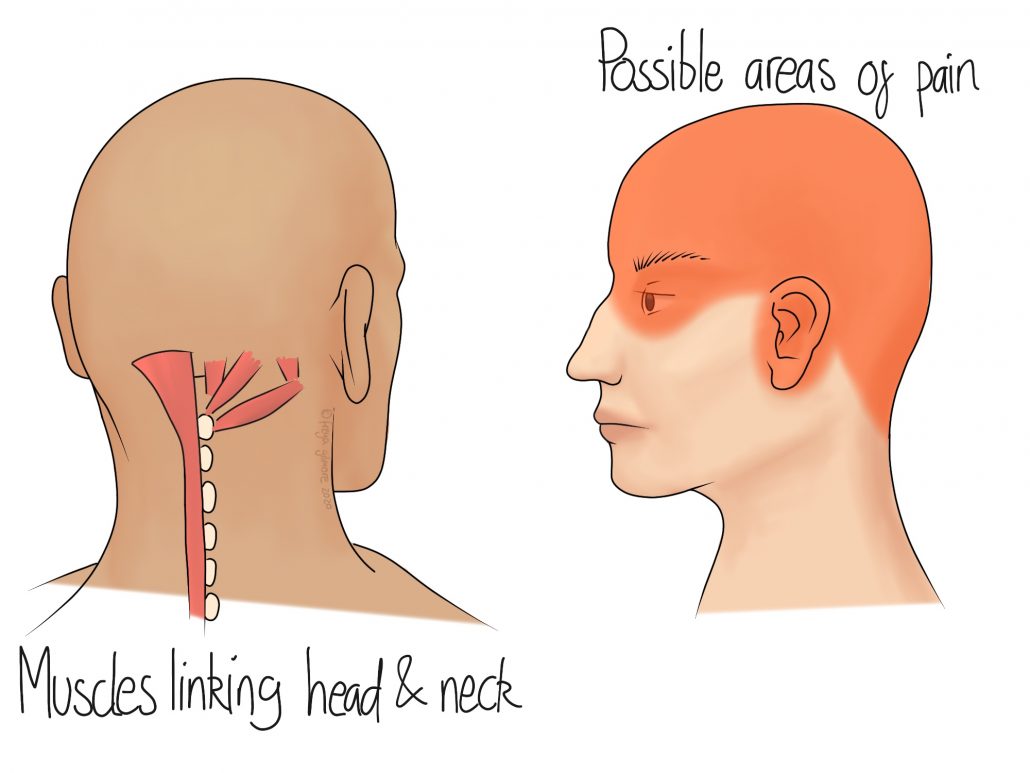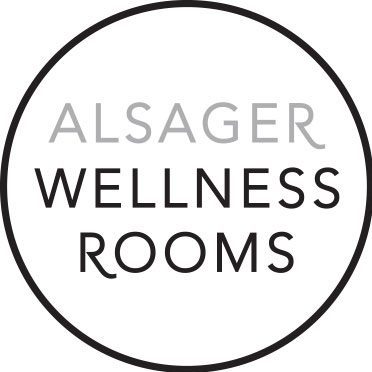Headaches caused by something going on in the neck are called Cervicogenic Headaches (CGH). Your osteopath can identify the cause and treat it to resolve your pain.

CGHs are often confused with tension type headaches (TTH), but the causes for the latter are unknown. CGHs can be explained by a problem in the neck, such as a muscle strain, ligament sprain, or irritated nerve.
Symptoms of Cervicogenic Headaches
The symptoms of CGH contrast to migraines and TTH.
- one-sided headache
- tenderness in the neck
- aggravated by some neck positions
- tightness in shoulders and back of the neck
Pain typically starts in the neck and tracks over the top or round the side of the head. This may last only an hour at a time, or continue for weeks.
Causes of Cervicogenic Headaches
Muscular Tightness
One of the most common factors in a CGH is the muscles at the base of the skull. Even if they are not the primary cause, they may tighten up in response to a problem elsewhere in the neck. You may find that a headache is exacerbated or relieved by pressing into the muscles illustrated above.
Disc and Nerve
A bulging disc in the neck may be asymptomatic locally, or it could irritate a nerve that supplies sensation to the neck or head. When a disc bulges in the neck, as with the lower back, the question is why. A bulge is a result of overloading, so your osteopath will want to work out what has happened to overload that specific area. This often means working into the rest of the spine, or looking at the muscles and joints around the ribs and shoulders.
People often get worried by the thought of a “slipped” disc or the involvement of a nerve. Discs are firmly stuck to the bones above and below, but the outer layer can become lax and push out. Nothing has come out of place, and this does not mean that the disc will stay that way forever. Even if it did, a lot of bulging discs are asymptomatic and only found incidentally on MRI. Likewise, an irritated or “trapped” nerve is not a problem forever either. Pain does not always correlate with damage.
Muscular Weakness
In conjunction with the other causes, weak muscles can play a role in CGHs. This is true not only for the neck muscles, but also those around the shoulder blades and everything in between. Once these are identified, we can work with you to strengthen the affected muscles in the treatment room and with exercises at home.
Osteopathic Management
Your osteopath will examine your neck and other areas that may be involved. There may be detailed questioning to ensure that your headache is suitable for osteopathic treatment. Once the contributing factors are identified, we can devise a treatment plan. This may involve massage and other techniques for muscles, and mobilisation for joints. Clicking joints can be particularly effective in the long and short terms, but if you are not comfortable with clicking, we have alternative ways of managing joint stiffness. Your osteopath will monitor your progress and adapt your treatment and exercise plans as your symptoms improve.
Book online now to see how we can help with your headaches.


Pingback: Osteopathy for Migraine Prevention - Osteopathy I Massage I Yoga I Pilates I Meditation I Alsager Wellness Rooms